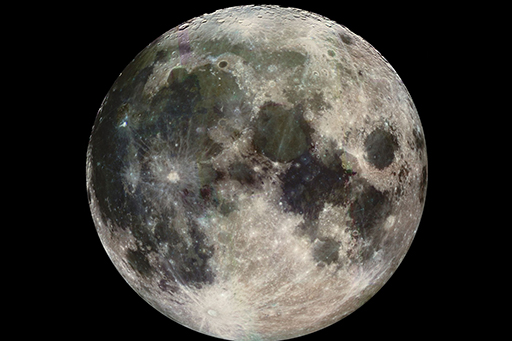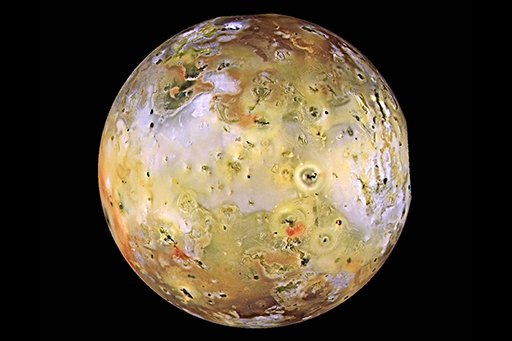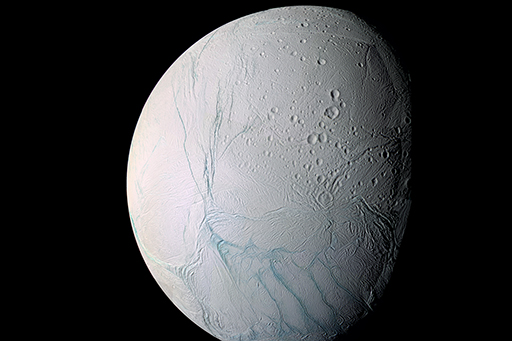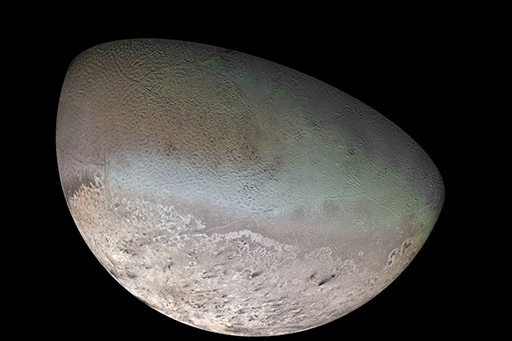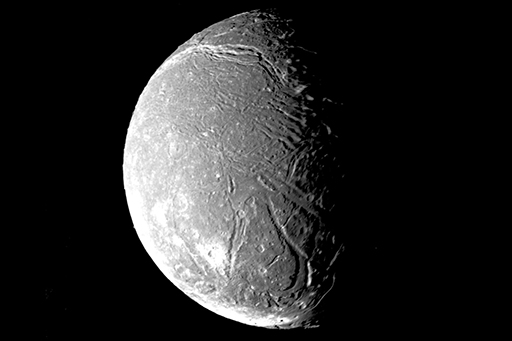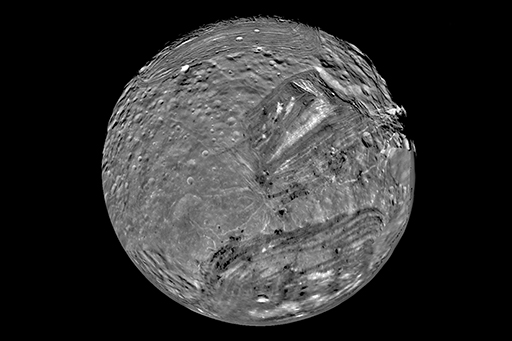1 Volcanism in the Solar System
Earth is not the only volcanically active body in the Solar System; it is not even the most volcanically active body. Smooth surfaces on moons and differing numbers of craters on different areas of the same moon suggest more recent geological activity, as can be seen in the examples here.
In Figure 1, smooth dark patches stand out, showing their younger ages from the relative lack of craters.
Figure 2 is of Io, Jupiter’s closest large moon. It is slightly bigger than Earth’s Moon but is volcanically active and no impact craters can be seen at all at this scale. They have all been buried by lava flows or by fall-out from explosive eruptions. The yellow colour is because of sulfur and sulfur dioxide frost supplied by the eruptions.
Figure 3 is a 504-km diameter moon of Saturn, which has a surface made largely of very cold (-200 °C) water-ice. Impact craters can be seen in much of the upper right portion, but elsewhere they have been destroyed by younger tectonic activity, in the form of many generations of fractures (cracks) that cross the surface. The blue tinge adjacent to the younger cracks in the south is probably because the ice crystals here are larger. These cracks, informally called the ‘tiger stripes’, are sites of explosive icy eruptions, where jets of ice crystals and volatile substances are spouted into space. The surface of Enceladus is extremely bright, reflecting 99% of the sunlight that falls on it; this is not apparent in this image because the exposure has been adjusted to show the surface clearly.
Figure 4 Neptune’s largest moon. It was discovered in 1846 by the British astronomer William Lassell just 17 days after Neptune was discovered. It is unusual in the Solar System, being a large moon that has an orbit opposite to the direction of the planet’s rotation (retrograde). Smooth plains in the upper right are probably icy lava flows, and the curious ridges and dimples elsewhere may be volcanic features too.
Figure 5 is an icy moon of Uranus, 1158 km in diameter. It was discovered in 1851 by the same man who discovered Triton – William Lassell. The straight-sided troughs that cross its surface are probably defined by pairs of faults, and the smooth material on their floors may have been erupted as flows of an ammonia–water mixture.
Figure 6 is a 472-km diameter moon of Uranus, with a very unusual surface. At top, middle and bottom are regions of grooved or stripy terrain, which may be partly volcanic in origin. They sit uncomfortably within more normal-looking areas of cratered terrain.

